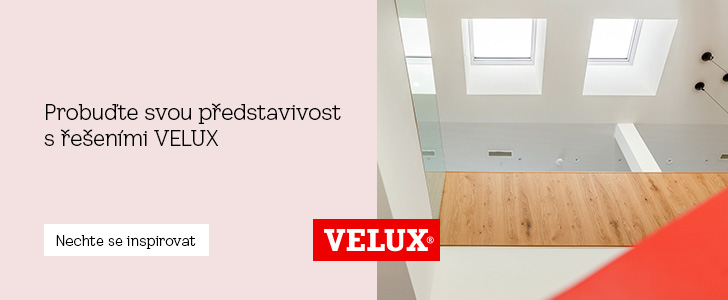
Urban Interventions Prague 2010 - Selected Projects
sporadical
Sacré Coeur - Mrázovka
Anděl in Prague's Smíchov has been experiencing a turbulent development in recent years.
Originally industrial buildings have been replaced by a new structure that has proven its viability and has become one of the city's significant centers. A new life is seeping into the block buildings from the 19th century, especially towards the Vltava riverfront. We can directly observe how the original streets and their ground floors come to life.
In contrast to this positive trend is the interruption of the main artery of Plzeňská street. The grade-separated interchange connecting the inner city ring road with the new center unnaturally separates the dynamically developing eastern part while simultaneously preserving the distressing state in the western part with the original historic buildings.
Our proposal highlights the potential of the urban parks Sacré Coeur and Mrázovka, which are directly adjacent to the center yet are left out of the "happenings" due to poor accessibility. They are located on opposite slopes along Plzeňská street. By covering the grade-separated interchange with a park deck, we will connect not only both parks but also smoothly integrate into the system of historic parks and gardens leading up to the Castle. The newly created area will naturally complement the recreational spaces of the existing parks, which are limited due to the sloping terrain, and will simultaneously reduce traffic noise.
Roháč Stratil architectural studio
Picnic of the New Scene
The Piazzetta of the National Theatre serves as an open space accessible to the public and artists throughout the day. This space opens up to new opportunities with a picnic in the form of urban lounging on the grass in the piazzetta, creating a new stage for human outdoor theatre – happening. The piazzetta comes alive with a program on the lawn: reading, playing, sitting, sunbathing, exercising, relaxing, circus, feasting... A civil program in an urban landscape open to all. The Picnic of the New Scene stands in contrast to the buildings of the National Theatre. The play moves outside during the summer theatre holidays.
Technical solution: A natural grassy area on a raised platform 500 mm above the existing pavement surface. The supporting structure of the platform is made from an aluminum system of practical modules. On the elevated horizontal surface, a regular assembly of a so-called green roof is installed.
ov-a
Footbridge Park above the tunnel outlet
The Blanka tunnel, routed through a controversial path, is a typical example of the arbitrary nature of transport construction in Prague. Its above-ground exit and grade-separated interchanges are created without public debate or architectural competition. The Malovanka interchange, which is being completed at the location where the Blanka tunnel connects with the Strahov tunnel, resembles an outlying suburban area. Meanwhile, its extensive area, covered with bundles of transport corridors at various elevation levels, spills just beyond the walls of historic Prague.
An open wound like the interchange harms the city. It interrupts the band of public parks that stretches from the walls through Hládkov to the gardens of the Malovanka estate and the Kajetánka chateau.
The proposal closes the wound in the urban structure with bridge-like spans across the space of the interchange and covers the traffic with a suspended park. Between the spans, a stainless steel net is stretched, overgrown with ivy and creeping dogwood. Above the areas untouched by the traffic corridor are park "squares" with a pond and a café. Pedestrians naturally walk through the park towards their goals. The leaves of the climbing plants block noise while also shading the driver's view as they pass through the tunnels. Cars dive into a green light, the experience of travelers resembles prehistoric memories of life in the jungle.
COLL COLL
Living Trees
The National Gallery has a reputation for being an inaccessible, ossified institution - we believe that part of this is due to its location. The Veletržní Palace hides behind a wall of mounds, moats, and the ubiquitous concrete flowerpots in the Czech Republic.
Instead of an open and vibrant house, the palace serves as headquarters for shops of unclear character and the lonely National Gallery, which despite all efforts is still not (and in its current form cannot be) a true center of social activity.
With a simple intervention, we replace the endless service ramps with a large freight elevator and create a barrier-free square serving visitors and the gallery. A network of connections woven into the pavement allows for versatile usage.
We design the square as an open space where trees can thrive.
The installation plays with visitors. Each Tree has a set of characteristics that make it a personality and program its behavior - I love the sun, I love peace, I enjoy movement, I like being with people, and so I offer them shade. Principles defining simple organisms compel trees to move, and their bustling draws the audience into the action. The installation creates a constantly changing ballet of architectural space.
During public events and temporary exhibitions, the movement of trees will be limited to a certain section of the area to define the activities with their presence.
Michaela Dlouhá and Tomáš Petermann
A Friendlier Old Town Square
While being an open urban space, Old Town Square is an impenetrable bottleneck in Prague. Thousands of tourists arriving regardless of the time of year wander aimlessly here, taking photos. Prague residents are deterred from spending time at Old Town Square; it feels like a sort of purgatory. After all, it offers them nothing – expensive restaurants, crowds of people, and zero opportunity for relaxation or lounging. So how can we return Old Town Square to the residents of Prague? Prohibit tourist access? Nonsense.
Let's free Hus’s monument from flowers and chains, let people onto it. One Hus, however, is not enough for the crowds. We will revitalize the dull surface of the square; people will be able to sit, enjoy, take photos, date, read, drink coffee, and do absolutely nothing. But they will be here, both tourists and Prague residents. We will replace wandering tourists with seated ones. In chaos, we will establish order. Passing through the square will no longer be a torturous slalom.
Thirty-five glowing laminated pedestals and boats measuring 5x7m shine at night and enliven the square. They create both public and more intimate seating.
Michal Krejčík
Green Patch
The patch camouflages the crack. It adapts to its surroundings, trying to blend in, so we perceive it as little as possible. The green patch repairs part of Prague between Chotkovy sady and Letenské sady. It allows for undisturbed and smooth transitions from one park to another. The patch covers a busy roadway. In close proximity to the center, a long tranquil strip of greenery will emerge, leading from the Brussels Pavilion to Prague Castle.
Balda Janďourek Žid | architects
Intervention at Černý Most
As residents and natives of Liberec, we spend as much time at Černý Most as we do in Prague, willingly or unwillingly. The aesthetic and construction quality, the quality of spaces and surface materials, as well as the quality of the surrounding areas is a torture for the architectural eye and perhaps even for the eye of the non-architect. Besides the drifting pigeons, scurrying mice, and stalactites from dripping water, there is nothing to look at. Moreover, there is practically nowhere to sit. The thought that we live nearby and pass through daily is even more traumatizing. This is part of Prague. That’s why we address this task.
Problems > solutions: 1) Does not function well operationally > bus stops at the same level as the metro, building - bridge over the road. 2) Does not provide sufficient functions > commercial ground floor in new buildings and in the annex to the metro building, for small services for relaxation; plus commercial café ground floor in the building across the road. 3) Does not create a pleasant environment > in today’s bus space is an underground parking lot, buses and the metro at one level leading to the square, a generous bridge over the road, the current metro building is surrounded by an annex, and the metro platform is separated from the road by a natural wall. 4) Is not urban-forming > infill construction of buildings around the "bridge" exit, creating a square. The bridge connects the square with a small park in relation to the parking lot. 5) Is not prominent > across the road, looking like a bridge, "symbol" of the new center, a gateway to Prague.
Sacré Coeur - Mrázovka
Anděl in Prague's Smíchov has been experiencing a turbulent development in recent years.
Originally industrial buildings have been replaced by a new structure that has proven its viability and has become one of the city's significant centers. A new life is seeping into the block buildings from the 19th century, especially towards the Vltava riverfront. We can directly observe how the original streets and their ground floors come to life.
In contrast to this positive trend is the interruption of the main artery of Plzeňská street. The grade-separated interchange connecting the inner city ring road with the new center unnaturally separates the dynamically developing eastern part while simultaneously preserving the distressing state in the western part with the original historic buildings.
Our proposal highlights the potential of the urban parks Sacré Coeur and Mrázovka, which are directly adjacent to the center yet are left out of the "happenings" due to poor accessibility. They are located on opposite slopes along Plzeňská street. By covering the grade-separated interchange with a park deck, we will connect not only both parks but also smoothly integrate into the system of historic parks and gardens leading up to the Castle. The newly created area will naturally complement the recreational spaces of the existing parks, which are limited due to the sloping terrain, and will simultaneously reduce traffic noise.
Roháč Stratil architectural studio
Picnic of the New Scene
The Piazzetta of the National Theatre serves as an open space accessible to the public and artists throughout the day. This space opens up to new opportunities with a picnic in the form of urban lounging on the grass in the piazzetta, creating a new stage for human outdoor theatre – happening. The piazzetta comes alive with a program on the lawn: reading, playing, sitting, sunbathing, exercising, relaxing, circus, feasting... A civil program in an urban landscape open to all. The Picnic of the New Scene stands in contrast to the buildings of the National Theatre. The play moves outside during the summer theatre holidays.
Technical solution: A natural grassy area on a raised platform 500 mm above the existing pavement surface. The supporting structure of the platform is made from an aluminum system of practical modules. On the elevated horizontal surface, a regular assembly of a so-called green roof is installed.
ov-a
Footbridge Park above the tunnel outlet
The Blanka tunnel, routed through a controversial path, is a typical example of the arbitrary nature of transport construction in Prague. Its above-ground exit and grade-separated interchanges are created without public debate or architectural competition. The Malovanka interchange, which is being completed at the location where the Blanka tunnel connects with the Strahov tunnel, resembles an outlying suburban area. Meanwhile, its extensive area, covered with bundles of transport corridors at various elevation levels, spills just beyond the walls of historic Prague.
An open wound like the interchange harms the city. It interrupts the band of public parks that stretches from the walls through Hládkov to the gardens of the Malovanka estate and the Kajetánka chateau.
The proposal closes the wound in the urban structure with bridge-like spans across the space of the interchange and covers the traffic with a suspended park. Between the spans, a stainless steel net is stretched, overgrown with ivy and creeping dogwood. Above the areas untouched by the traffic corridor are park "squares" with a pond and a café. Pedestrians naturally walk through the park towards their goals. The leaves of the climbing plants block noise while also shading the driver's view as they pass through the tunnels. Cars dive into a green light, the experience of travelers resembles prehistoric memories of life in the jungle.
COLL COLL
Living Trees
The National Gallery has a reputation for being an inaccessible, ossified institution - we believe that part of this is due to its location. The Veletržní Palace hides behind a wall of mounds, moats, and the ubiquitous concrete flowerpots in the Czech Republic.
Instead of an open and vibrant house, the palace serves as headquarters for shops of unclear character and the lonely National Gallery, which despite all efforts is still not (and in its current form cannot be) a true center of social activity.
With a simple intervention, we replace the endless service ramps with a large freight elevator and create a barrier-free square serving visitors and the gallery. A network of connections woven into the pavement allows for versatile usage.
We design the square as an open space where trees can thrive.
The installation plays with visitors. Each Tree has a set of characteristics that make it a personality and program its behavior - I love the sun, I love peace, I enjoy movement, I like being with people, and so I offer them shade. Principles defining simple organisms compel trees to move, and their bustling draws the audience into the action. The installation creates a constantly changing ballet of architectural space.
During public events and temporary exhibitions, the movement of trees will be limited to a certain section of the area to define the activities with their presence.
Michaela Dlouhá and Tomáš Petermann
A Friendlier Old Town Square
While being an open urban space, Old Town Square is an impenetrable bottleneck in Prague. Thousands of tourists arriving regardless of the time of year wander aimlessly here, taking photos. Prague residents are deterred from spending time at Old Town Square; it feels like a sort of purgatory. After all, it offers them nothing – expensive restaurants, crowds of people, and zero opportunity for relaxation or lounging. So how can we return Old Town Square to the residents of Prague? Prohibit tourist access? Nonsense.
Let's free Hus’s monument from flowers and chains, let people onto it. One Hus, however, is not enough for the crowds. We will revitalize the dull surface of the square; people will be able to sit, enjoy, take photos, date, read, drink coffee, and do absolutely nothing. But they will be here, both tourists and Prague residents. We will replace wandering tourists with seated ones. In chaos, we will establish order. Passing through the square will no longer be a torturous slalom.
Thirty-five glowing laminated pedestals and boats measuring 5x7m shine at night and enliven the square. They create both public and more intimate seating.
Michal Krejčík
Green Patch
The patch camouflages the crack. It adapts to its surroundings, trying to blend in, so we perceive it as little as possible. The green patch repairs part of Prague between Chotkovy sady and Letenské sady. It allows for undisturbed and smooth transitions from one park to another. The patch covers a busy roadway. In close proximity to the center, a long tranquil strip of greenery will emerge, leading from the Brussels Pavilion to Prague Castle.
Balda Janďourek Žid | architects
Intervention at Černý Most
As residents and natives of Liberec, we spend as much time at Černý Most as we do in Prague, willingly or unwillingly. The aesthetic and construction quality, the quality of spaces and surface materials, as well as the quality of the surrounding areas is a torture for the architectural eye and perhaps even for the eye of the non-architect. Besides the drifting pigeons, scurrying mice, and stalactites from dripping water, there is nothing to look at. Moreover, there is practically nowhere to sit. The thought that we live nearby and pass through daily is even more traumatizing. This is part of Prague. That’s why we address this task.
Problems > solutions: 1) Does not function well operationally > bus stops at the same level as the metro, building - bridge over the road. 2) Does not provide sufficient functions > commercial ground floor in new buildings and in the annex to the metro building, for small services for relaxation; plus commercial café ground floor in the building across the road. 3) Does not create a pleasant environment > in today’s bus space is an underground parking lot, buses and the metro at one level leading to the square, a generous bridge over the road, the current metro building is surrounded by an annex, and the metro platform is separated from the road by a natural wall. 4) Is not urban-forming > infill construction of buildings around the "bridge" exit, creating a square. The bridge connects the square with a small park in relation to the parking lot. 5) Is not prominent > across the road, looking like a bridge, "symbol" of the new center, a gateway to Prague.
The English translation is powered by AI tool. Switch to Czech to view the original text source.
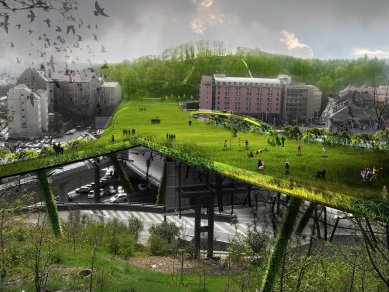
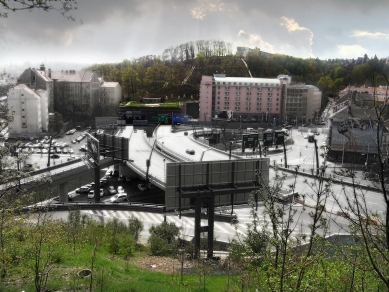
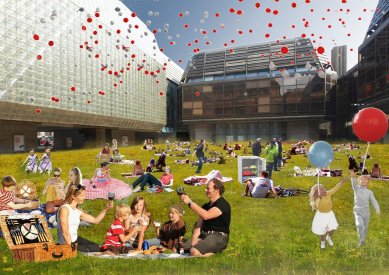
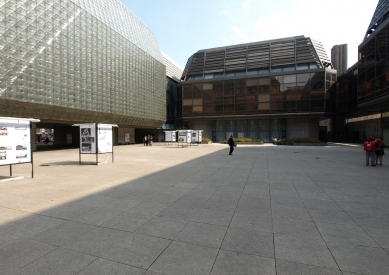
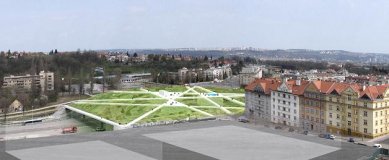
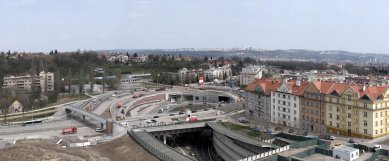
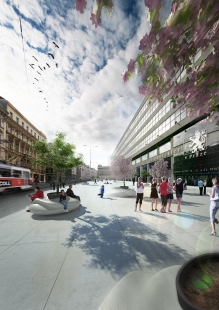
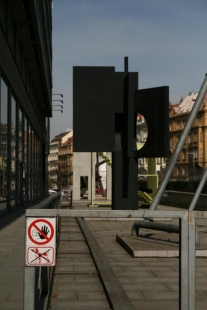

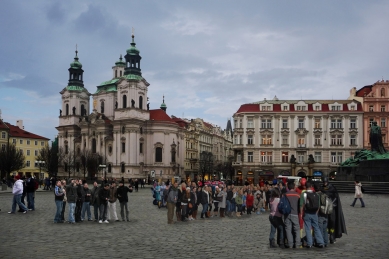
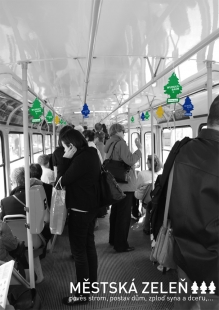
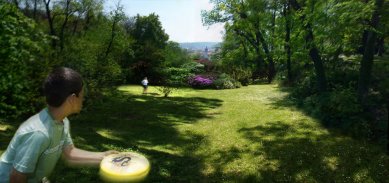
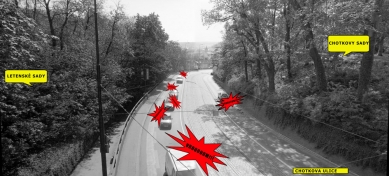
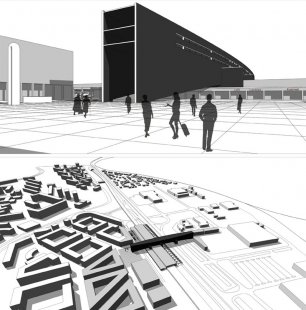
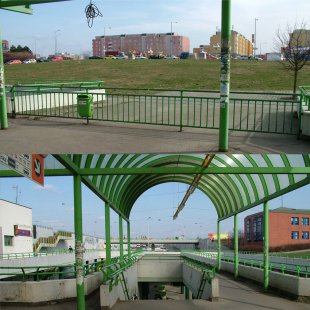
Related articles
0
26.07.2013 | The Urban Interventions project aims to highlight problematic areas in Ostrava
3
20.03.2012 | Green Malovanka – A Solution for the Highway Interchange in the City Center
0
20.09.2011 | Urban Interventions Brno 2011 - Selected Projects
0
19.08.2010 | Piknik Nové scény – invitation to the grand opening
0
30.06.2010 | Urban Interventions Prague 2010 - the last live performance of the project authors
0
09.06.2010 | Urban Interventions Prague 2010 - 4th Live Performance of Project Authors
0
02.06.2010 | Urban Interventions Prague 2010 - 3rd Live Performance of Project Authors
2
26.05.2010 | Urban Interventions Prague 2010 - 2nd Live Performance of Project Authors
0
19.05.2010 | City Interventions Prague 2010 - 1st Live Performance of the Project Authors
0
12.05.2010 | DOX presents ideas on how to transform Prague's spaces
1
05.05.2010 | Municipal Interventions Prague 2010 - Invitation to the Exhibition


